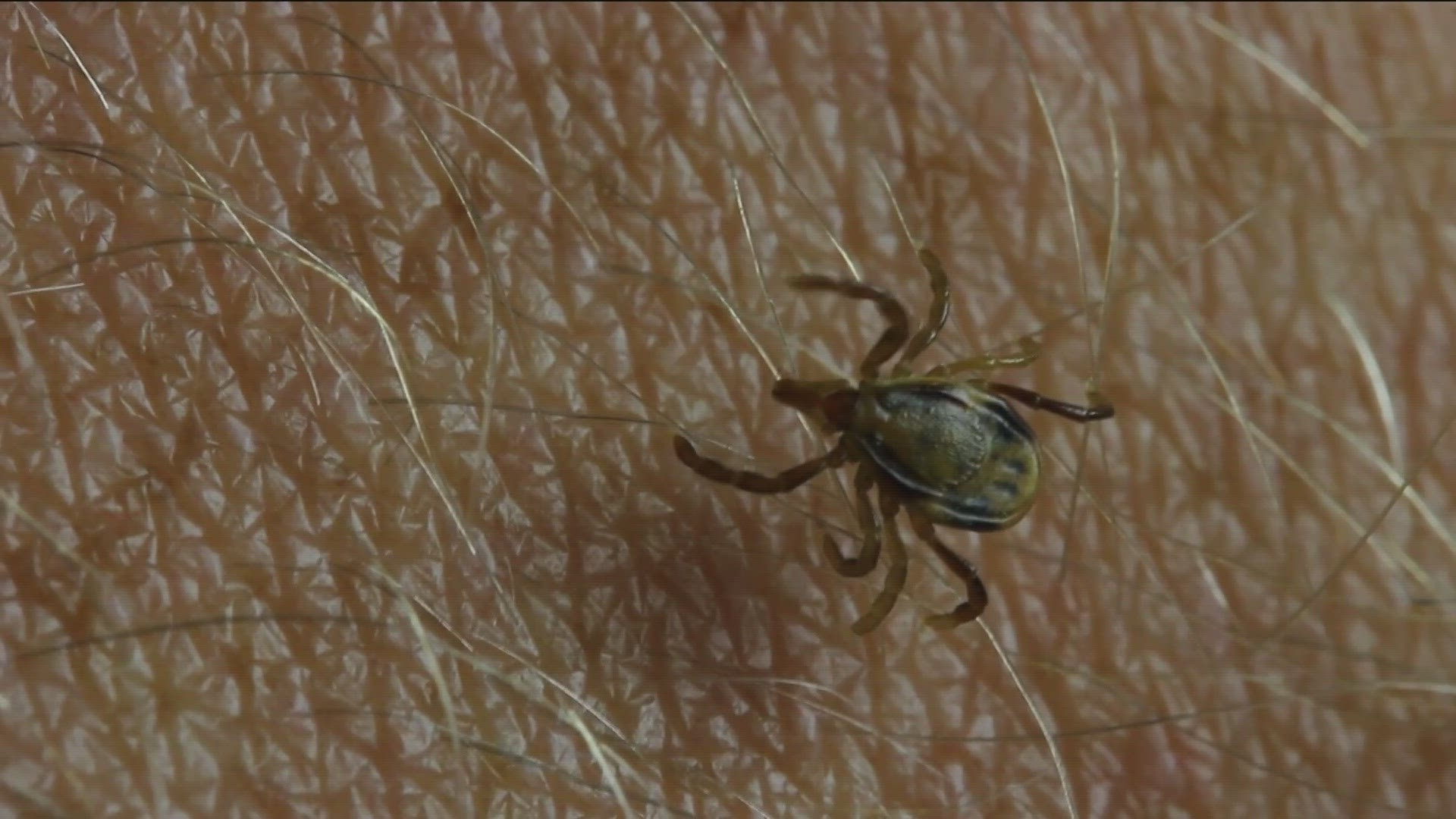IDAHO, USA — You can count on them like you can count on 90 degree days in a Southern Idaho summer.
If you spend any time in the outdoors - especially backcountry brush - chances are you've brushed up against some ticks.
The bothersome bloodsuckers can cause some serious health problems, so it's important to know what to do if you spot a tick.
Idaho is in the middle of peak tick season, which runs from around May to July - and experts say that ticks are more common in years where there has been a lot of rain and brush growth.
"These foothills are very active with ticks in the springtime and early summer," Dr. Kirk Campaña with AFC Urgent Care in Garden City said.
The parasites hide in tall grasses and shrubs, Dr. Campaña says that ticks live on blood - kind of like mosquitos.
"They go from host to host," Dr. Campaña said. "So, there are bloodborne illnesses, viruses, parasites, bacteria."
Illnesses like Lyme Disease - although Dr. Campaña says Lyme Disease is more common on the East Coast. Ticks can also spread diseases like Rocky Mountain Spotted Fever, which was first reported in Idaho, and can lead to permanent health complications.
"Contracting the disease is first of all very sensitive to how long the tick was attached, and two, the ability to treat the illness is very sensitive to how long you've had it," Dr. Campaña said. "So, someone that had Lyme Disease for two or three weeks - they get tested, they get treated, most of the time they'll be cured. Someone who's had it for months and then is treated, not always completely recovers."
Before you head into the backcountry this summer, there are some ways to help prevent getting ticks.
"One of the best protections is a barrier," Dr. Campaña said.
Barriers like longer layers - and insect repellants like DEET.
"When you finish your hike...a lot of people have a habit or a good routine of showering afterwards and just kind of doing a survey," Dr. Campaña said.
If you find a tick, you can often flick it off yourself - unless it's already attached.
"You can tell when it's attached because the head is down buried into the skin and the abdomen, or round part, is sticking up in the air," Dr. Campaña said.
The best way to remove a tick is with a pair of pointed tweezers or forceps.
"You get as close to your skin as possible and grab its mouth parts and just lift straight up," Dr. Campaña said. "And then wash with soap and water to kind of get rid of any infectious agents that might be present."
Whenever you handle or remove a tick, make sure to wash your hands after, because the tick may have blood or pathogens from other animals or humans.
After you remove a tick, monitor for redness or a sore in that area.
"It's really key that you get checked out early if you think you have something unusual going on," Dr. Campaña said.
Watch more Local News:
See the latest news from around the Treasure Valley and the Gem State in our YouTube playlist:
HERE ARE MORE WAYS TO GET NEWS FROM KTVB:
Download the KTVB News Mobile App
Apple iOS: Click here to download
Google Play: Click here to download
Stream Live for FREE on ROKU: Add the channel from the ROKU store or by searching 'KTVB'.
Stream Live for FREE on FIRE TV: Search ‘KTVB’ and click ‘Get’ to download.

